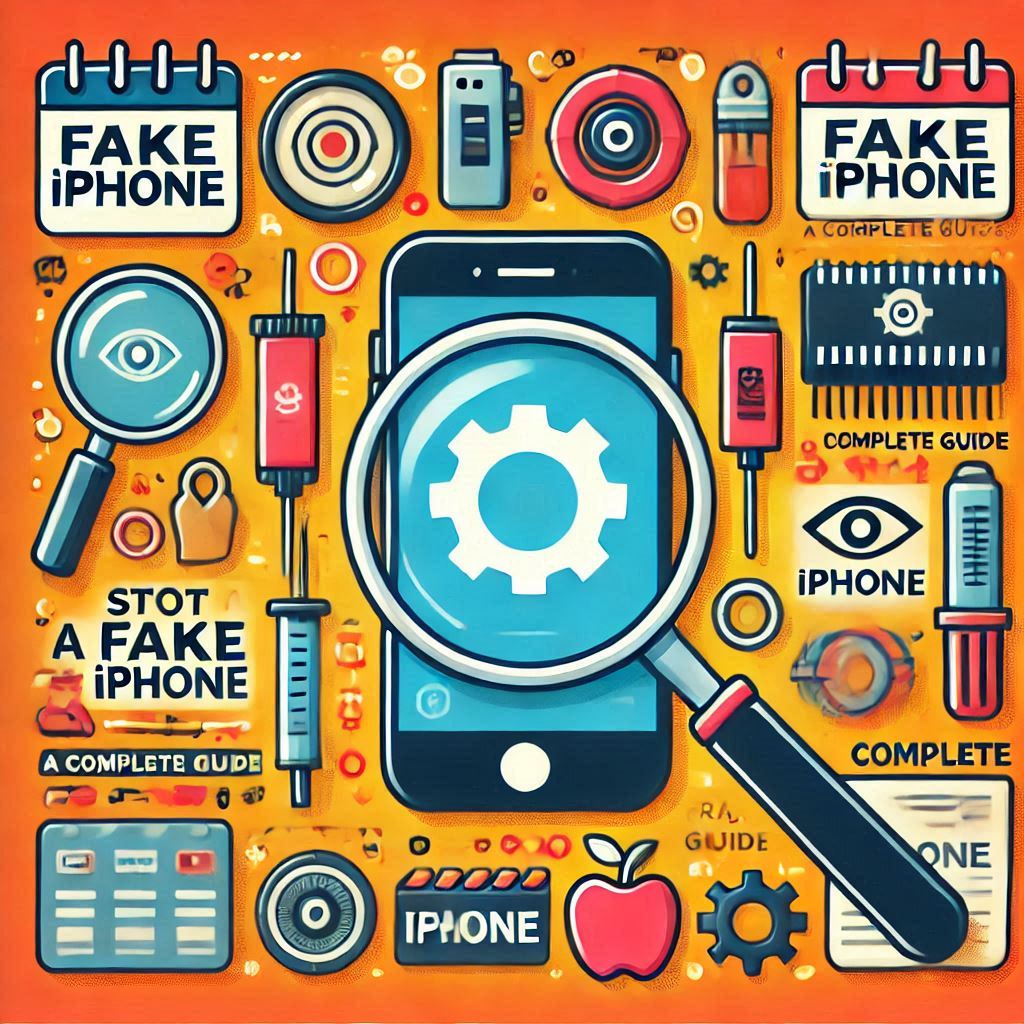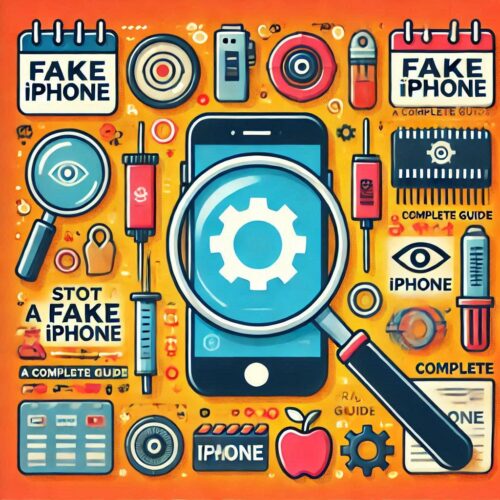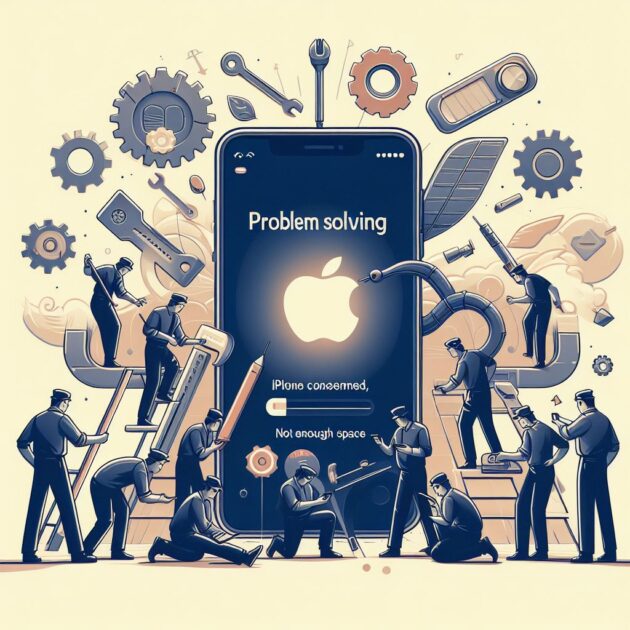How to Spot a Fake iPhone A Complete Guide to Protect Yourself from Scams. iPhones are among the most popular smartphones worldwide. They’re not just known for their cutting-edge technology but also as a symbol of status. As demand for iPhones soars, the market has also seen an increase in counterfeit devices that closely resemble the real ones. With the festive season approaching, scams are more likely to rise, and it becomes crucial to verify if the iPhone you are buying is genuine or fake. Here is a comprehensive guide to help you distinguish between a real iPhone and a counterfeit.
How to Spot a Fake iPhone: A Complete Guide to Protect Yourself from Scams
1. Inspect the Packaging and Accessories
Apple is known for its premium packaging. Counterfeit iPhones often try to replicate the look of the original but fail when it comes to quality. Here’s what to check:
- Box Quality: Genuine iPhone boxes are sturdy with high-quality images and text. Counterfeit boxes may have poor print quality and loose packaging.
- Accessories: Authentic accessories, such as charging cables, should feel heavy, well-designed, and include the “Designed by Apple” label. Counterfeit accessories may look flimsy or poorly made.
Tip: If you have a genuine iPhone, compare the packaging and accessories side by side to spot any differences.
2. Verify the Serial Number and IMEI
Every iPhone has a unique serial number and IMEI number. These numbers can help you verify the authenticity of the device.
- Find the Serial Number: Go to Settings > General > About to locate your iPhone’s serial number.
- Check Coverage: Visit Apple’s Check Coverage page and enter the serial number. This will tell you if the device is genuine and show its warranty status.
- IMEI Number: Dial *#06# on your iPhone to view the IMEI number. Cross-check it with the one on the box and SIM tray. All numbers should match.
If the serial number, IMEI, or coverage page results don’t align, it could be a counterfeit.
3. Examine the Build Quality
Apple is known for producing premium-quality devices. To spot a fake, pay attention to these details:
- Feel and Finish: A real iPhone should feel solid with no gaps, loose parts, or flimsy areas. The Apple logo should be smooth and perfectly aligned.
- Design Features: Look at the weight, screen size, and thickness. These features should match the specifications of the model you bought.
- SIM Tray: If you remove the SIM tray, counterfeit devices often show rough edges or visible flaws. Check for imperfections.
Pro Tip: Use a magnifying glass to closely inspect logos and other details on your iPhone.
4. Check the Software and Features
One of the easiest ways to identify a fake iPhone is by examining its software.
- Operating System: Authentic iPhones run Apple’s iOS. Check the software version by going to Settings > General > Software Update.
- Fake iPhones: Many counterfeit devices run Android with an iOS-like skin. Try activating Siri by saying, “Hey Siri” or holding the power button. If Siri doesn’t respond, the device is likely a fake.
5. Visit an Authorized Apple Service Center
If you’re still uncertain about the authenticity of your iPhone, it’s best to visit an Apple-authorized service center.
- Professional Verification: Apple experts can verify whether your device is genuine or counterfeit.
- Repairs: Always use authorized service centers for repairs to avoid counterfeit swaps. Apple’s authorized technicians can identify a fake device with ease.
Why It’s Important to Verify Your iPhone’s Authenticity
Owning a counterfeit iPhone can have serious consequences. Here’s why it’s crucial to ensure your device is genuine:
- Security Risks: Counterfeit devices may lack proper security features, leaving your personal data vulnerable to hacking or theft.
- Lack of Software Updates: Counterfeit iPhones often cannot receive important software updates, resulting in a subpar user experience and potential performance issues.
- Poor Quality: Fake iPhones may not function properly, leading to hardware and software malfunctions.
6. Avoid Untrusted Sources
The rise of counterfeit iPhones has been fueled by untrusted sellers. To protect yourself, always buy iPhones from trusted and verified retailers such as Apple Stores, authorized online platforms, and carriers. Be cautious when purchasing from third-party websites or marketplaces that offer deals that seem too good to be true.
Also Read – Microsoft Makes File Sharing Between iPhone and PCs Easier With New Link to Windows Feature
7. Be Wary of Unofficial Repair Shops
When your iPhone needs repair, always opt for an authorized Apple repair center. Many unverified repair shops may replace genuine parts with counterfeit or refurbished ones, making your iPhone’s authenticity difficult to ascertain. Always insist on using official service providers for repairs.
Conclusion
As iPhone demand continues to rise, counterfeit devices are becoming more prevalent. The risks associated with buying a fake iPhone go beyond financial loss and include security and functionality issues. By following the steps in this guide—checking the packaging, serial numbers, build quality, software, and seeking professional help—you can protect yourself from scams and ensure that you have a genuine Apple product. Always purchase from trusted sources and opt for official service centers to avoid counterfeit replacements.
By staying vigilant and informed, you can enjoy the benefits of owning a real iPhone without falling victim to scams.




